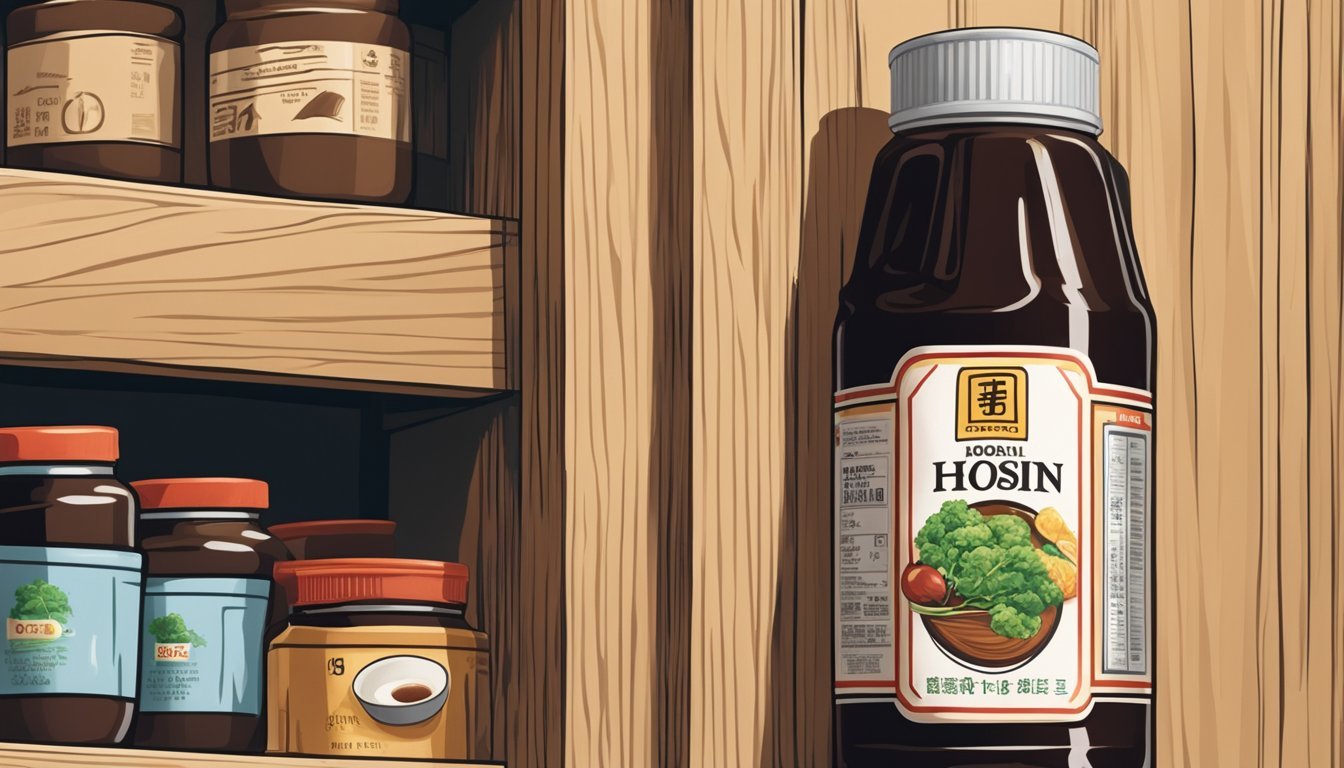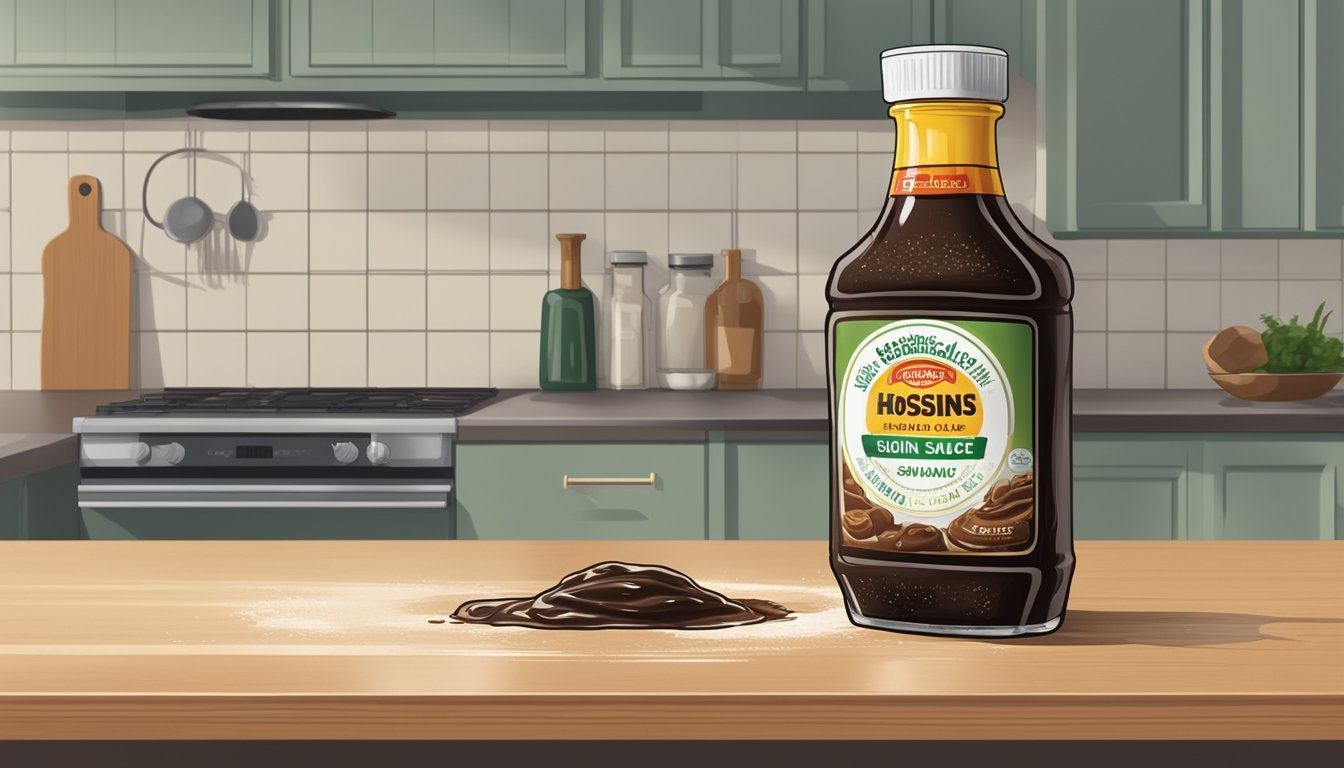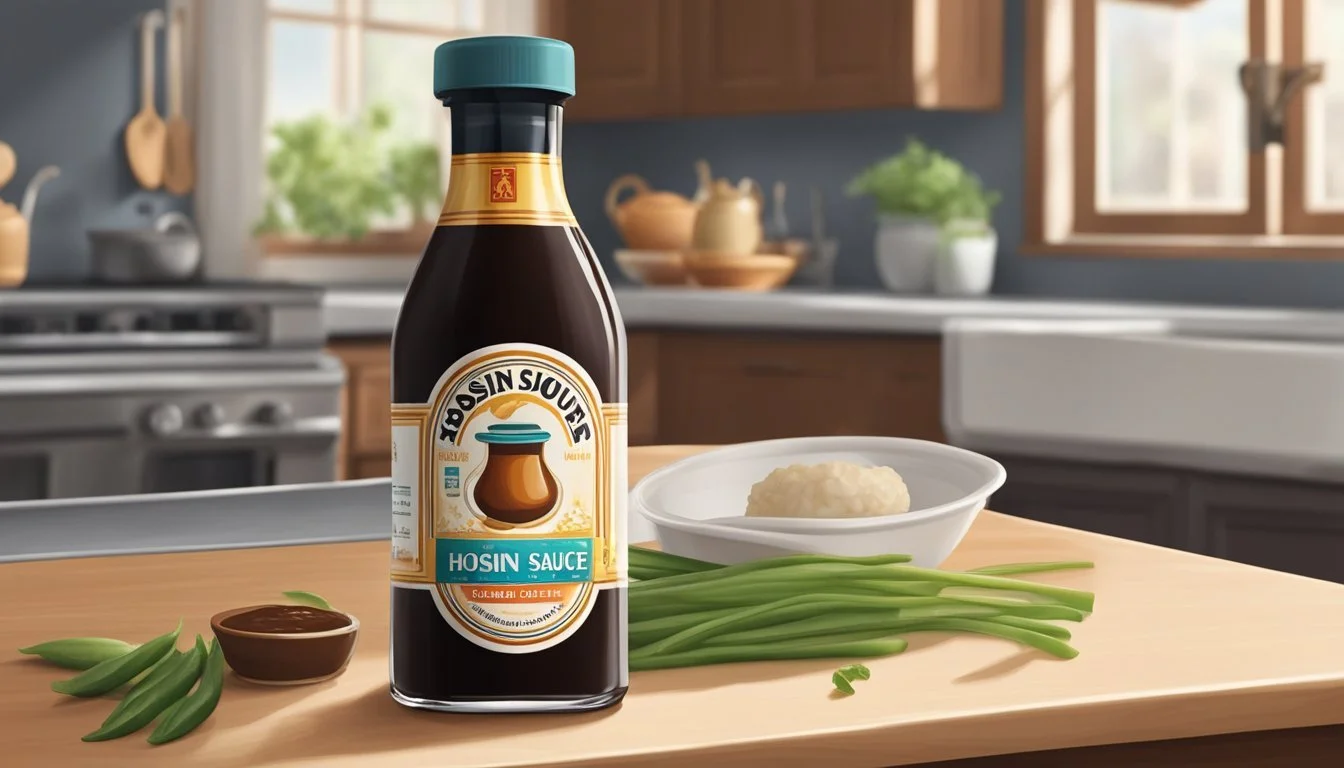How Long Does Hoisin Sauce Last?
Shelf Life and Storage Tips
Hoisin sauce (how long does hoisin sauce last?) is a staple in many pantries, especially for those who enjoy Asian cuisine. It is a thick, fragrant sauce typically made from a combination of soybeans, garlic, chili peppers, and various spices. The complexity of its flavor—somewhat sweet, tangy, and spicy—makes it a versatile ingredient in cooking. It's used as a marinade, a glaze for meats, and as a flavorful addition to stir-fries and dipping sauces. Given its frequent use, consumers often wonder about its longevity and how long it retains its quality after opening.
Shelf life of hoisin sauce varies depending on a range of factors including storage conditions and whether the bottle has been opened. An unopened bottle of hoisin sauce generally has a long shelf life, often lasting two to three years from its manufacturing date if stored in a cool, dry place. Opening the bottle introduces bacteria from the environment, which can diminish its shelf life. Once opened and refrigerated, hoisin sauce typically remains at its best quality for about 12 to 18 months. Signs of spoilage include an off smell, changes in texture, and the presence of mold. Users are advised to consult the best before date provided by manufacturers and employ proper storage techniques to maximize the sauce's shelf life.
Understanding Hoisin Sauce
Hoisin sauce is a complex and versatile condiment that plays a significant role in Chinese cuisine. It is known for its unique flavor profile and diverse culinary uses, as well as containing information about its nutrition that may be of interest to consumers.
Ingredients and Flavor
Hoisin sauce is traditionally composed of a blend of fermented soybean paste, garlic, vinegar, sesame oil (how long does sesame oil last?), chili peppers, and spices. A key sweetener in the sauce is often sugar, which balances the saltiness of the soybean base. Its rich, bold flavor has sweet and salty notes, with a hint of tanginess that comes from the vinegar and a slight heat from the chili. This depth of flavor makes hoisin sauce an adaptable ingredient in various dishes.
Culinary Uses
As an important Asian condiment, hoisin sauce shines in the realm of Chinese cuisine. It's commonly used as a glaze for meats, a flavorful addition to stir-fries, or as a dipping sauce for traditional dishes such as Peking duck and moo shu pork. Given its robust and distinct flavor, a little hoisin sauce goes a long way in imparting a memorable taste to a range of recipes.
Nutritional Information
Calories: Moderate -- it is generally consumed in small quantities due to its strong flavor.
Gluten: Many brands contain gluten, although gluten-free versions are available.
Allergens: Contains soy and possibly sesame; consumers with allergies should read labels carefully.
Vegan: Typically vegan-friendly, as it doesn't contain animal products, but it's always best to check individual brand ingredients.
The healthful aspect of hoisin sauce lies in its lack of animal fats and its use of soybeans, which are a good source of protein. However, the presence of sugar and sodium indicates that it should be used in moderation within a balanced diet.
Shelf Life and Expiration
The shelf life of hoisin sauce varies depending on whether it is opened or unopened. Understanding how long hoisin sauce retains its best quality helps minimize waste and ensures safe consumption.
Unopened Hoisin Sauce
Unopened hoisin sauce typically maintains its best quality for approximately 3 years when stored properly. It's essential to store the sauce in a cool, dark place, like a pantry.
Opened Hoisin Sauce
After opening, hoisin sauce should be refrigerated to preserve its quality. While the optimal quality is maintained for about 3 months, it often remains safe to consume afterward if stored correctly, assuming the bottle remains undamaged and shows no signs of spoilage.
Expiration Date Interpretation
The expiration date on hoisin sauce bottles is usually an indicator of best quality, rather than safety. It is generally safe to use the sauce beyond this date if it has been stored properly, shows no signs of spoilage, and maintains its texture, color, and flavor.
Proper Storage Methods
Proper storage is key to preserving the quality and extending the lifespan of hoisin sauce. Whether the sauce is unopened or opened affects the storage method, with factors like temperature, light, and air exposure playing crucial roles.
Unopened Jars
Unopened jars of hoisin sauce should be stored in a cool, dark place such as a pantry or cupboard, away from any sources of light and heat, which can degrade the product. The ideal storage temperature is below 77°F (25°C). Ensuring the storage area is dry will prevent the labels from peeling off and potentially exposing the product to contamination.
Opened Jars
Once opened, hoisin sauce should be stored in the refrigerator to maintain its freshness. Transferring the sauce into an airtight container can help to minimize exposure to air, which can lead to spoilage. It's best to note the date of opening on the container to keep track of its shelf life.
Freezing Hoisin Sauce
While not commonly recommended due to the potential for texture changes, freezing hoisin sauce can be an option for long-term storage. To freeze, portion the sauce into small amounts and use freezer-safe bags or containers, squeezing out excess air before sealing. Defrost in the refrigerator before use.
Signs of Spoilage
When it comes to hoisin sauce, certain signs indicate spoilage. It is important for consumers to recognize these signs to prevent the consumption of a potentially bad product.
Visual Indicators
Inspecting hoisin sauce for changes in appearance is vital. Color shifts, such as a dulling or browning, can signal that the sauce has deteriorated. The presence of mold is a definitive indication that the hoisin sauce has spoiled and should not be consumed. Furthermore, any bacterial growth or unusual particles floating in the sauce also warrant immediate disposal of the product.
Olfactory Indicators
The smell of hoisin sauce is a reliable factor to discern freshness. An off or sour odor is a telltale sign that the sauce has gone bad. Hoisin sauce should have a sweet and savory aroma, characteristic of its ingredients. Any deviation from this smell can suggest spoilage.
Texture Changes
The texture of hoisin sauce should be consistent and smooth. If the consistency becomes rubbery or if the sauce separates with water pooling, these are indicators of dehydration or breakdown of the product. A thickened or slimy texture is another sign that the hoisin sauce should no longer be used.
Safety and Consumption
When considering the safety and consumption of hoisin sauce, one must be attentive to the risks associated with spoiling and the steps to minimize contamination. Ensuring hoisin sauce is safe to use involves recognizing spoilage signs and practicing proper storage.
Risks of Consuming Spoiled Hoisin Sauce
Consuming spoiled hoisin sauce can lead to food poisoning, showcasing symptoms such as nausea, vomiting, and diarrhea. The quality of hoisin sauce may degrade over time, making it important to look for signs of spoilage:
Presence of mold: Any visible mold growth indicates contamination.
Off smell: A sour or fermented odor is a clear sign that the sauce should not be consumed.
Change in texture or color: These changes can suggest that the sauce is no longer safe to use.
How to Minimize Contamination
To maintain the safety and extend the shelf life of hoisin sauce, follow these measures:
Refrigerate after opening: Keeping hoisin sauce refrigerated consistently helps preserve its quality.
Use clean utensils: To prevent introducing bacteria into the sauce.
Keep the lid closed: Ensuring the bottle is tightly sealed after each use minimizes exposure to contaminants.
By adhering to these guidelines, individuals can consume hoisin sauce with confidence regarding its safety and quality.
Comparing Hoisin Sauce with Other Condiments
In the realm of condiments, hoisin sauce holds its own with a distinctive flavor and longer shelf life compared to some other sauces. This section will detail how hoisin sauce stacks up against other popular condiments, taking into account aspects like taste, ingredients, shelf life, and suitability for those with dietary restrictions.
Hoisin Sauce vs. Oyster Sauce
Hoisin Sauce is a thick, fragrant sauce often used in Asian cuisine. It typically contains a mixture of ingredients such as soybeans, sugar, vinegar, garlic, and various spices, and may sometimes include sesame seeds. The sauce is versatile, with a sweet and salty flavor profile that is less briny than its counterpart, Oyster Sauce. Oyster sauce, made primarily from oyster extracts, water, sugar, and salt, has a shorter shelf life once opened; usually up to six months refrigerated.
Flavor: Hoisin is sweeter, Oyster is saltier and more seafood-like.
Shelf Life: Hoisin lasts up to 12-18 months opened, Oyster up to 6 months.
Usage: Both are staples in Asian dishes but serve different flavor profiles.
Hoisin Sauce vs. Barbecue Sauce
Hoisin Sauce shares some flavor notes with Barbecue Sauce such as sweetness and a tangy finish. However, barbecue sauce, which is commonly used in Western cuisines, has a flavor that can range from sweet to smoky to spicy, often with a tomato base. It's not as thick as hoisin and typically has a shelf life similar to oyster sauce once opened.
Base Ingredients: Hoisin is soy-based, Barbecue is often tomato-based.
Consistency: Hoisin is thicker, Barbecue is more varied.
Shelf Life: Both can last up to 6 months after opening if refrigerated.
Alternatives for Allergy Sufferers
For those who have allergies, particularly to soy or gluten, finding a condiment with a similar flavor profile to hoisin sauce can be challenging. Gluten-free alternatives are becoming more prevalent, with some brands offering hoisin sauce free from common allergens.
Soy-Free: Look for soy-free alternatives often made with a base of miso.
Gluten-Free: Some brands offer gluten-free hoisin by using alternative grains.
Note: Always check labels to ensure no cross-contamination or presence of other allergens.
Utilizing Hoisin Sauce in the Kitchen
Hoisin sauce is a versatile condiment that enriches various dishes with its sweet and savory depth. This robust sauce is primarily used as a dipping sauce, incorporated into marinades, and added as a flavorful component to stir-fries.
As a Dipping Sauce
Hoisin sauce serves as a bold dipping sauce for various appetizers. It is particularly popular as an accompaniment to:
Spring rolls
Dumplings
The sauce's unique flavor profile complements these dishes, enhancing their taste without overpowering the delicate fillings.
In Marinades
Marinades with hoisin sauce infuse meats with a rich, umami-packed essence. The ingredients for a basic hoisin marinade could include:
Hoisin sauce as the base
Soy sauce for saltiness
Rice wine vinegar for acidity
A dash of sesame oil for depth
Spices such as garlic and five-spice powder
This marinade works exceptionally well with pork, chicken, and beef, acting as a tenderizer and imparting a caramelized glaze when cooked.
For Stir-Fries
As a quintessential component in stir-fries, hoisin sauce brings a cohesive flavor that binds all ingredients together. For example:
Begin with aromatic vegetables like garlic and onions in the wok.
Add the primary protein (tofu, chicken, beef) and cook until seared.
Introduce vegetables like bell peppers and snap peas for crunch.
Stir in a spoonful of hoisin sauce to coat and combine well.
The hoisin sauce not only acts as a thickener for the stir-fry sauce but also gives the dish a signature sweet and tangy taste that is immediately recognizable.
Homemade Hoisin Sauce
Creating a homemade hoisin sauce allows for customization of flavors while ensuring the use of fresh ingredients. Proper preservation and storage are key to maintaining its freshness and quality over time.
Creating Your Own Blend
Homemade hoisin sauce typically combines ingredients such as soybeans, garlic, vinegar, and various spices to achieve its signature sweet and salty flavor profile. One starts by mixing these ingredients to a smooth consistency, often using a food processor or blender. It is essential that they ensure the balance of flavors to their preference, as some may desire more sweetness or a stronger garlic note.
Preservation and Storage
The preservation and storage of homemade hoisin sauce are crucial in extending its shelf life. One should store their homemade hoisin sauce in an airtight container to prevent contamination and oxidation. The ideal storage condition is in the refrigerator, where it can last from 7 to 10 days. For longer shelf life, one can freeze the sauce where it will maintain its quality for up to 3 months. Regardless of where it is stored, it's important to keep it at a consistent, cool temperature and away from direct sunlight.
Labeling and Packaging
The information on a hoisin sauce label and the type of packaging used are pivotal for understanding shelf life and maintaining the sauce's quality over time.
Understanding Food Labels
Labels on hoisin sauce provide vital details regarding the product's shelf life. Typically, a label will display a best-by or expiration date, which should be adhered to for maximum quality. Labels also may indicate whether the sauce is in an opened jar or an unopened jar, which affects its longevity. After opening, the quality is best preserved if the sauce is consumed within a specified period, usually mentioned on the label.
Packaging Material and Its Role in Preservation
The packaging of hoisin sauce, often a glass jar with a tightly sealing lid, plays a crucial role in preserving the sauce's quality and extending its lifespan. A glass jar shields the sauce from air exposure and contaminants, while the lid ensures a hermetic seal, reducing the risk of spoilage. After opening, it is important to ensure that the lid is re-sealed properly to maintain freshness. The packaging material directly influences the product's preservation, with glass being a preferred medium due to its non-reactive nature, keeping the hoisin sauce flavor intact.









